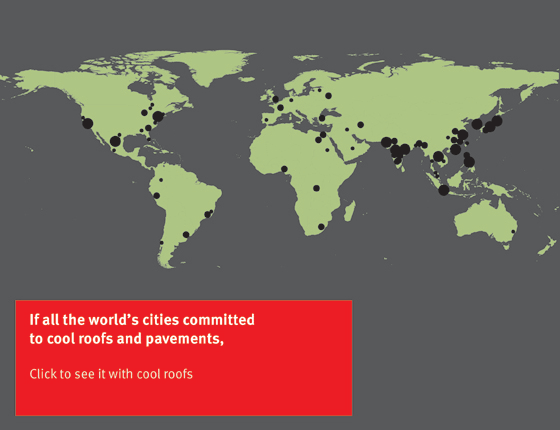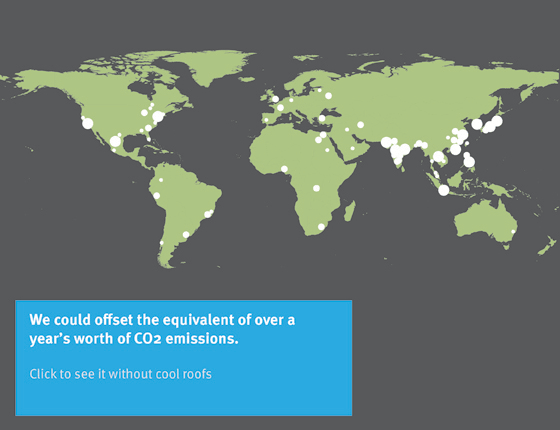Cool Roofs reflect light, offsetting the heating effects of CO2 emissions.
Highly reflective urban surfaces reduce the overall effects of climate change by reflecting light back into space.


The latest research shows that cool roofs and pavements can help cool the entire planet. Permanently retrofitting urban roofs and pavements in the tropical and temperate regions of the world with solar-reflective materials would have an equivalent effect on global temperatures as stopping the emissions of 44 billion tonnes of CO2, or over one year’s worth of humanity’s CO2 emissions.
The planet is warming. Highly reflective roofs and pavements can help cool it. Increasing the reflectivity, or albedo, of our roads and buildings is an effective tool to help alleviate some of the stress caused by rising average global temperatures.
Although the practice of using reflective roofs to cool buildings has been used for generations, it is only recently that we have begun to model the global effects of cool roofs and pavements. In 2009, Climatic Change published a paper calculating the climate benefits of installing cool roofs and cool pavements across the world’s urban areas, using readily available technology. Assuming an increase of the albedo of urban areas of 0.1, this paper estimated that such a change would have a cooling effect on global temperature equivalent to removing 44 gigatons CO2 from the atmosphere, or over one year’s worth of global, man-made carbon dioxide emissions.
Cool roofs are not a substitute for aggressive action to prevent climate change. However, they can help minimize the effects of climate change, buying time for more aggressive mitigation actions.
For more in-depth explanations, read A Practical Guide to Cool Roofs and Cool Pavements on our Toolkit site.
